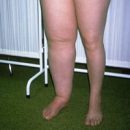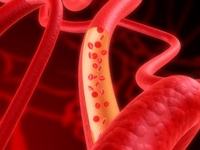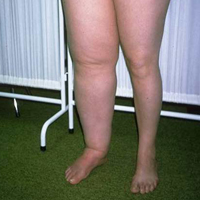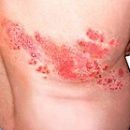Thrombophlebitis is an acute inflammatory vehicle process, which is accompanied by the formation of blood clots inside the bloodstream. Depending on the affected vessel, the thrombophlebitis of surface and deep veins are distinguished. Treatment The disease can be medicated and surgical.
Content
Thrombophlebitis is the acute inflammation of the veins, accompanied by education in their lumen of blood clots (thrombov), and, often, inflammation of the surrounding vein of soft tissues.
By location, thrombophlebitis of subcutaneous (surface) veins and thrombophlebitis of deep veins of limbs are distinguished, and in the nature of the process - purulent and non-resident. The most often thrombophlebitis occurs in varicose extended veins of the lower extremities.
Pre-providing factors are pregnancy, childbirth, injuries, surgical operations, oncological diseases, systematic physical overload. Heavy complications are possible, such as the propagation of surface thrombophlebitis on deep veins, the transition to purulent inflammation to the formation of abscesses and phlegmon, the distribution of the process to the pelvis vein, the separation of the thrombus and thromboembolism of the pulmonary arteries (the blockage of their thrombus, transferred from the deep veins of the lower extremities and the pelvis). In long-term deadlines after acute thrombophlebitis of deep veins of the lower extremities, progressive chronic venous insufficiency with long-lasting ulcers of the legs is possible. Thrombophlebitis is sharp, subacute and chronic.
Basic symptoms of the disease
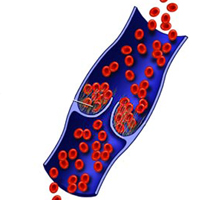 In the acute thrombophlebitis of deep veins in the first days, severe pains in the limb are noted, the temperature rises to 39.5-40 s, there is a significant edema of the entire limb, the skin on it becomes intense, shiny, pale, and sometimes cyanotic. Stress limb is usually colder than healthy. In cases of the transition of acute thrombophlebitis in purulent - there is a development of multiple abscesses in the course of thrombied veins, which can lead to a felm. Very often, acute thrombophlebitis is cured, without moving to the chronic stage. Terms of the course of acute thrombophlebitis from 10 days to 3 months. and more.
In the acute thrombophlebitis of deep veins in the first days, severe pains in the limb are noted, the temperature rises to 39.5-40 s, there is a significant edema of the entire limb, the skin on it becomes intense, shiny, pale, and sometimes cyanotic. Stress limb is usually colder than healthy. In cases of the transition of acute thrombophlebitis in purulent - there is a development of multiple abscesses in the course of thrombied veins, which can lead to a felm. Very often, acute thrombophlebitis is cured, without moving to the chronic stage. Terms of the course of acute thrombophlebitis from 10 days to 3 months. and more.
Acute thrombophlebitis of surface veins begins not sharply pronounced pains along the surface venous trunks, increase in temperature to 37.5 s, rarely up to 38 s, and in the future the temperature becomes subfebrile and normal. There is a small swelling of the affected limb. The skin in the way of the veins is hyperemic (has a red shade) in the form of a strip, then seals appear different values, depending on the diameter of the affected vein, which can be determined when cautious palpation. More often amazed large subcutaneous and, less often, small subcutaneous Vienna of the lower extremities. Duration of the disease - from 10 to 30 days.
Chronic thrombophlebitis of deep and superficial veins flows for a long time - from several months to 1 year and more.
With migratory thrombophlebitis, predominantly surface veins of the upper and lower extremities are affected. Suddenly there are painful nodules along the veins, the skin swell over them and blushes. Such nodules arise in the course of surface veins in various sections, then one, then another limb. The overall condition of the patient changes little. Temperature more often subfebrile. Migrating thrombophlebitis often recurrences and lasts for years. This disease is more likely to have men. It is characterized by simultaneous defeat.
Treatment of thrombophlebitis
Treatment of thrombophlebitis can be conservative and surgical. With acute thrombophlebitis (especially deep veins), a strict bed mode is recommended that prevents the possibility of spreading microflora and arms of embolism. The sublime position of the limb on the tire contributes to the improvement of venous outflow and reducing edema and pain. Recommended Drink (up to 2-3 l per day) if there are no contraindications from the cardiovascular system.
With acute and subacute, surface thrombophlebitis patients are allowed to rotate, sit down, release the finiteness from the tire for 10-20 minutes. And keep it in a horizontal position. To improve collateral blood circulation during subacute and chronic thrombophlebitis, warming compresses are recommended. With acute thrombophlebitis, especially in the first days of the disease, thermal procedures, fat dressings due to gaining pain should not be applied. To reduce pain and improve collateral (additional) blood circulation, a lumbar novocaine blockade is used in Vishnevsky: 80 ml of 0.25-0.5% of the nomocaine solution, repeating the injection in 5-6 days (23 times). The use of cold in these cases is permissible if the patient is determined by the pulse on the arteries of the stacked limb. With weakening or absence of ripples, the cold enhances the arterial spasm.
Physiotherapy Methods (ultraviolet irradiation, Soluxux, infrared rays, etc.) Applied in the chronic stage of surface thrombophlebitis, during the organization of blood clot.
Resort treatment (Pyatigorsk, Sochi-Motesta) can be resolved strictly individually only with a long existing chronic surface thrombophlebitis without exacerbation and trophic disorders.
For the treatment of thrombophlebitis in all stages, anticoagulants are used in the complex with the above methods. Anticoagulant tools lower blood clotting. Dicumarine, Neodyacumarine, Phenylin, Sipkurmar and other drugs reduce the content of prothrombin in the blood and this prevents the formation of new thrombas in vessels. It is necessary to use these drugs under the control of blood tests, including the smaller of Prothrombin, the norm of which ranges from 87 to 100%, and with thrombophlebitis reaches 117-127%. The reduction of prothrombin to 25-30% should be considered limit, since further can lead to bleeding from the nose, gum, uterus, to hematuria, etc.
Anticoagulants are contraindicated in the presence of fresh wounds, ulcers, open forms of pulmonary tuberculosis, diseases of the kidneys, liver, hemorrhagic diathesis, etc. At high temperature or suspicion of purulent thrombophlebitis, antibiotics are used. As a means of direct impact on the thrombus use fibrinolytic drugs, which in the early stages of the process lead to lysis of thrombov. Fibrinolytic drugs include fibrinolysin, streptocinase, urocks, tripsin, chymotrypsin.
Surgical methods: produce vein dressing, dissection, vectomy and excision of thrombic nodes of surface veins.
Prevention of thrombophlebitis
The prevention of thrombophlebitis is determined by the timely treatment of diseases that are complicated by the development of thrombophlebitis. Patients with varicose veins, trophic ulcers must be in a timely manner to surgical treatment. Improving the level of prothrombin in the blood causes the need to appoint anticoagulant means, which is especially necessary for patients with restriction of active movements.

